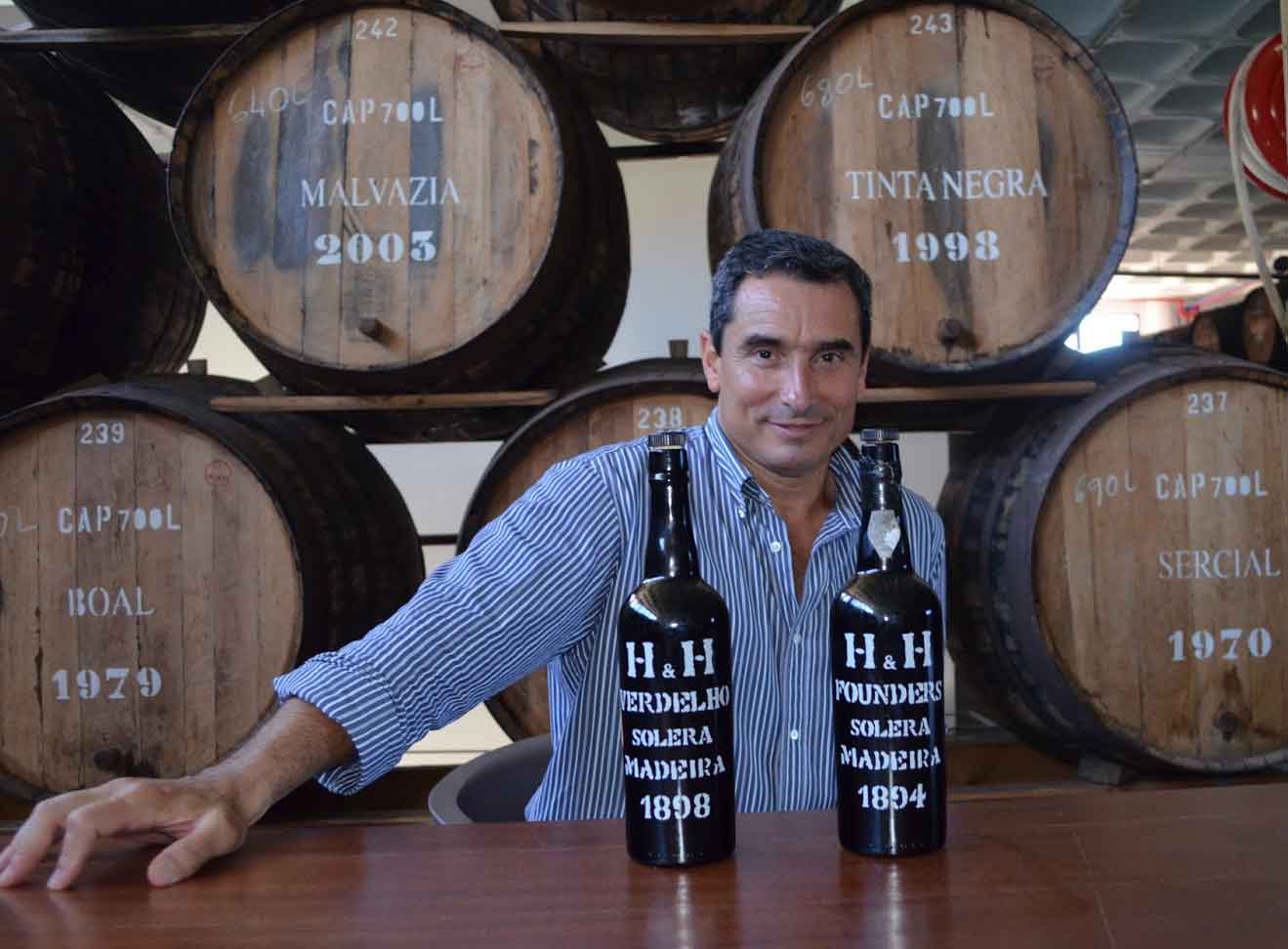H&H Boal Madeira 1954

|

|
About Boal
Along with Sercial, Verdelho and Malvasia, Boal is one of the classic white grapes of Madeira. In its youth, it is the darkest of the classic varieties, ranging from tawny to tortoise shell in color. Sweeter than Verdelho, yet less so than Malvasia, Boal is meio doce: “medium-sweet”, thought to offer Madeira lovers the ideal combination of elegance and richness. Redolent of dried fruit, barley sugar, crème brûlée and caramel, its volume is checked by its natural tang of acidity; the finish is surprisingly dry and delineated. Vintage wines tend to grow subtler and more Verdelho-like with extended elevage. There are currently just 15.5 ha under vine on the island.Tasting Notes
“The bouquet is outstanding, as it offers up a deep and complex blend of heather, orange zest, cherries, peaches, a bit of garrigue, honey cake, salty soil tones and a touch of new leather. On the palate the wine is deep, full-bodied, complex and powerfully built in style, with a rock solid core, tangy acids that are beautifully buried in sweetness and outstanding grip and balance on the very long finish that closes with a nice touch of savory nuances ... There is an awful lot to like in this very long and very complex wine.” —John Gilman, “View from the Cellar”(50-65ºF)
(55-64ºF)
(55-59ºF)
About Henriques & Henriques
 Base map data ©2017 Google
Base map data ©2017 GoogleIt might be said that the history of Henriques & Henriques is the history of Madeira itself. Legend has it that Infante Dom Henriques planted the island’s first vines in 1425. These vines gave fruit to one of the “first families of Madeira” and in the process sunk deep roots which Henriques’ descendants and successors continue to draw upon in guiding H&H today.
João Joaquim Gonçalves Henriques founded the firm in 1850 as a partidista, supplying wine to other merchants from extensive Henriques vineyard holdings while continuing to amass significant stocks of old wines in the family cellars. In 1925, Henriques & Henriques began to bottle and export Madeira produced entirely from their own vineyards—an anomaly amongst producers on the island. Today, Henriques & Henriques is led by CEO and winemaker Humberto Jardim, one of Madeira’s great visionaries and ambassadors. The firm continues to source some of its needs from its own vineyards, most notably from a terraced, 10-hectare vineyard at Quinta Grande—the single largest on island, replanted in 1995.
Against the tides of urban development, H&H have been in the forefront of vineyard planting and preservation of Madeira’s noble varieties: Sercial, Verdelho, Boal, Malvasia and Terrantez, while simultaneously playing a key role in the reappraisal of the underrated Tinta Negra, recently releasing an unprecedented 50-year expression. Likewise, H&H’s age-statement varietal wines are widely regarded as benchmark articulations: always 100% of the stated varietal (e.g., Verdelho), the blend always composed of stocks well in excess of the statement requirement (e.g., 15-year).
Finally, H&H continues to boast an impressive selection of pre-1925 “Garrafeira” (vintage) and Solera bottlings originating in the Henriques’ family cellars. Without question, the most celebrated of these is the “Heavenly Quartet”—four legendary wines from the late 18th century—that are amongst the most transcendent expressions of Madeira extant today. To taste any one of these is, quite literally, to “drink history” itself, as well as to share in the accumulated wisdom—of family, family-owned vineyards and old stocks—that continue to define Henriques & Henriques today. Full details
About Madeira DOC
The archipelago of Madeira has long profited from its position in shipping lanes, from the 1500s, when ships under sail called at Funchal to pick up food and wine before the trade winds blew their ships west to the New World, to today, when cruise ships dock and world travelers sample the foods, crafts, and wines of the island. The Madeira DOC governs the fortified and heated-to-oxidation wines of the island, regulating the grapes, minimum age, and residual sugars of each category. While the Madeira laws give producers plenty of leeway in terms of blending and age statements, Henriques & Henriques’ blending approach is crystal clear—true minimum age statements and only monovarietal wines.
Viticulture/Vinification
| Cepage | 100% Boal |
|---|---|
| Terrain/Climate | mountainous; subtropical but highly varied |
| Soil Type | mixed volcanic (basalt, tufa) |
| Vine Training | latada (pergola) |
| Harvest | mid-August to early September; hand-harvested |
| Fermentation | some whole-cluster; skin maceration; fermented in lagares with native yeasts |
| Fortification | traditional aguardente de cana (70% abv) |
| Elevage | in canteiro for 38 years; bottled in 1993 |
| ABV | 18.6% |
| R.S. | 89.3 g/l |
| Total acidity | 5.8 g/l |
| Total extract | 118.8 g/l |
| SKU | Vintage | Region | Origin | Desc | Cepage | % Alc | Size/Pack | Finish | BTL Barcode | Cs Barcode | Cs Wgt |
|---|---|---|---|---|---|---|---|---|---|---|---|
| HZ 6592-1954 | 1954 | Madeira | PT | Oxidative/Oxidized Wine; Fortified | 100% Boal | 20.0% | 750/6 | cork | 5601196011013 | 45601196011011 | 8.50 kg |



